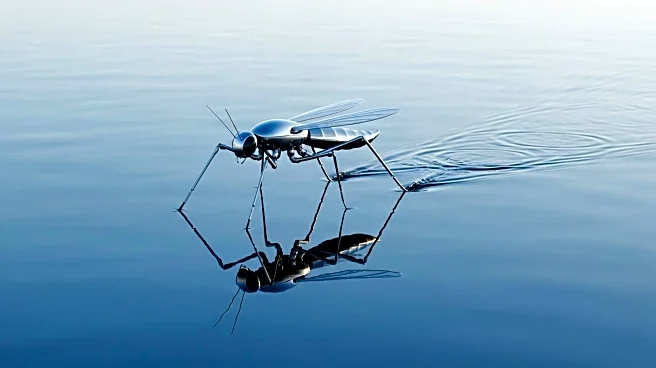What's Happening?
Researchers have developed a robot named Rhagobot, inspired by Rhagovelia water striders, which can walk on water. This robotic innovation utilizes fan-like appendages that mimic the natural adaptations of these insects, allowing the robot to glide across water surfaces. The study, led by biologist Victor Ortega-Jimenez, explores the potential of self-morphing artificial propellers based on the biological form and function of Rhagovelia's leg fans. This advancement in robotics highlights the intersection of biology and technology in creating efficient movement mechanisms.
Why It's Important?
The development of Rhagobot represents a significant step in robotics, showcasing how biological adaptations can inform technological advancements. This robot's ability to walk on water could lead to new applications in environmental monitoring, search and rescue operations, and exploration of aquatic environments. By understanding and replicating natural mechanisms, researchers can create more efficient and versatile robots, potentially transforming industries that rely on robotic technology. This innovation underscores the importance of interdisciplinary research in driving technological progress.













